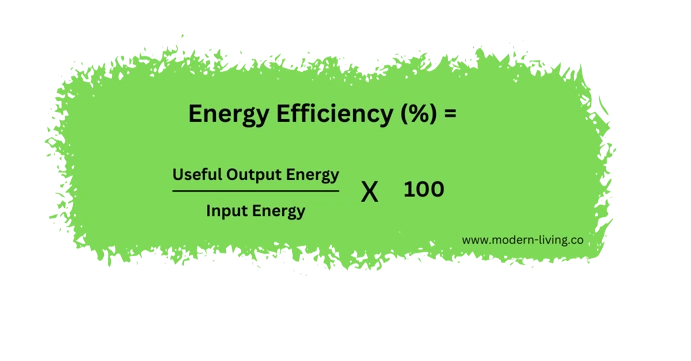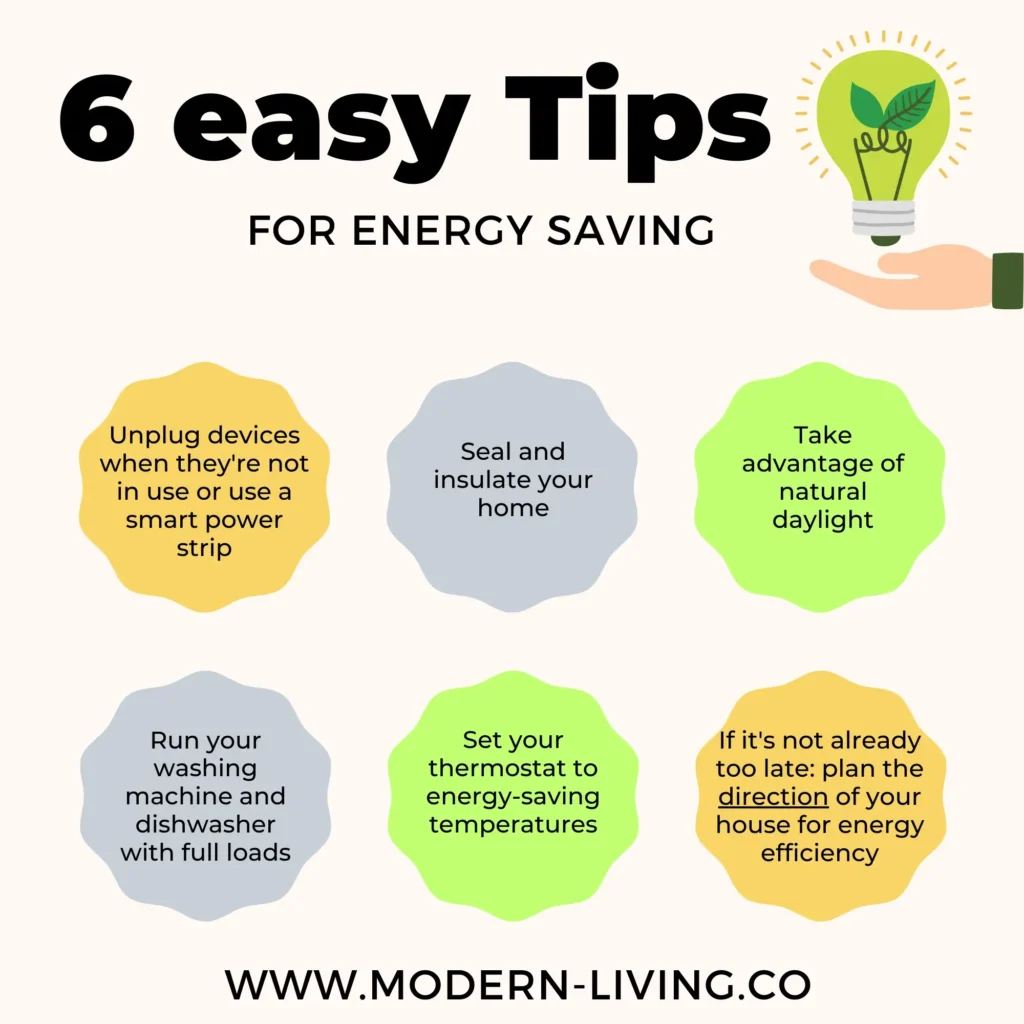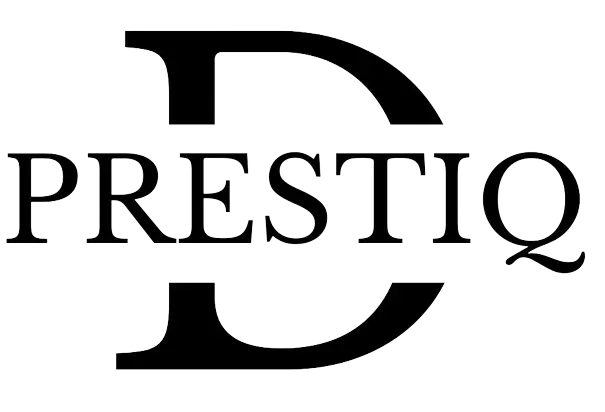Energy efficiency is a crucial concept these days, and knowing how to calculate it easily can make our lives more sustainable. As I’ve learned about this topic, it’s apparent that understanding energy efficiency is vital for conserving resources and for making better decisions in daily life. Let me share what I’ve learned and guide you on how to calculate energy efficiency, so you can analyze your consumption patterns and improve them wherever necessary.
The basic method to calculate energy efficiency is quite simple. It involves comparing the useful output energy to the input energy, expressed as a percentage. Being aware of this calculation helps us understand how efficiently a particular device or system is using energy. And trust me, learning this process can be quite helpful to identify potential areas for energy savings in our everyday lives.
Importance of Energy Efficiency

Energy efficiency is not just about saving money on our electricity bills; it also plays a crucial role in addressing climate change, reducing energy consumption, and helping us become more environmentally friendly.
Efficient use of energy can also boost our energy equity, as it lessens the strain of paying for energy, especially for families with high energy burdens. This means that a more significant percentage of their income goes to paying energy bills than the average household. Making our homes and appliances energy efficient eases our financial burden while simultaneously reducing our carbon footprint.
Implementing energy efficiency measures in buildings can contribute greatly to sustainable development and the fight against climate change. By using efficient appliances, properly insulating our homes, and applying other energy-saving practices, we optimize energy use and curtail greenhouse gas emissions.
Moreover, understanding how to calculate energy efficiency helps us measure the efficiency of our devices and systems, which is vital for informed decision-making. For instance, knowing that a higher-efficiency device requires less input energy to produce the same output can ultimately lead us toward greener choices.
So, mastering the concept of energy efficiency and applying it in our daily lives can make a substantial difference for our planet and our wallets. Let’s embrace these practices and work together to create a more sustainable future.
How to Calculate Energy Efficiency
If you’re like me and often wonder how to calculate energy efficiency, you’ve come to the right place! In this section, we’ll dive into the energy efficiency ratio and various methods for calculating energy efficiency. Let’s get started!
The Energy Efficiency Ratio
The energy efficiency ratio (EER) is a key concept in understanding energy efficiency. It’s the ratio of useful output energy to input energy, expressed as a percentage. The formula for EER is:

By using this simple formula, we can determine the efficiency of a system, whether it involves heat energy, electric power, mechanical work, or even chemical energy.
Methods for Calculating Energy Efficiency
- Direct Method: This method involves measuring the energy input and output directly. For example, in an electrical system, you could measure the input energy in kilowatt-hours and the useful output energy in watt-hours. Simply plug in these values into the EER formula above to calculate the energy efficiency.
- Indirect Method: In some cases, direct measurement of energy input and output may not be possible due to various constraints. In such scenarios, we can use the indirect method, which involves calculating the energy efficiency by analyzing performance parameters, like fuel consumption, operating hours, and output work. After considering these factors, we can estimate the input and output energy values and then apply the EER formula.
- Benchmarking: Comparing the performance of a system or process to an industry standard or a similar system is another method for calculating energy efficiency. By analyzing the differences in performance, we can understand the areas of improvement and work on enhancing the energy efficiency of the system.
By using the energy efficiency ratio and various calculation methods, we can identify areas of improvement and ensure a sustainable future.
Factors Affecting Energy Efficiency
In this section, I will discuss two key components influencing energy efficiency: the type of energy source and the operating conditions of a system.
Type of Energy Source
The energy source plays a major role in determining the efficiency of a device. Different sources of energy have different characteristics, which ultimately impact the conversion of input energy to useful output energy. For instance:
- Fossil fuels: These sources, such as coal, oil, and natural gas, often have higher conversion losses due to heat generation and emissions. Therefore, devices relying on these sources may display reduced efficiency.
- Renewable energies: Solar, wind, and hydroelectric power have lower conversion losses compared to fossil fuels. As a result, devices utilizing these sources tend to have higher energy efficiency.
Operating Conditions
The efficiency of a system can also be influenced by the environment in which it operates. Some of the key operating conditions to consider are:
- Temperature: High temperatures can cause energy losses due to increased resistance, thus lowering efficiency. Conversely, low temperatures may boost efficiency in some devices.
- Maintenance: Regular maintenance of a device ensures that its components function properly and efficiently. Devices that are not well-maintained may experience reduced energy efficiency due to wear and tear.
- Load: If a device is operating at its optimal load, it will achieve the highest possible efficiency. However, if the device is running under or over its ideal load, the efficiency may decrease.
Taking these factors into account is crucial when considering how to calculate energy efficiency. By understanding the impact of energy sources and operating conditions, I can make more informed decisions when it comes to improving the energy efficiency of a system.
Improving Energy Efficiency

Energy Efficient Appliances
A simple and effective way to improve energy efficiency is by investing in energy-efficient appliances. When you’re shopping for new gadgets and home equipment, look for the ENERGY STAR label – this certification ensures that the product meets the highest efficiency standards. Replacing older, energy-consuming appliances with ENERGY STAR certified versions can significantly lower your utility bills and reduce your carbon footprint.
Some popular energy-efficient appliances include:
- LED light bulbs
- Energy-efficient refrigerators
- High-efficiency heat pumps
- Smart thermostats
- Mini Splits
Smart Energy Practices
Apart from upgrading appliances, there are numerous adjustments and habits you can adopt to enhance energy efficiency. Implementing smart energy practices at home can save you money and promote a greener, healthier environment.
Here are some quick tips:
- Unplug devices when they’re not in use or use a smart power strip to prevent standby power consumption.
- Seal and insulate your home to prevent drafts and energy loss during heating and cooling.
- Take advantage of natural daylight and use curtains to retain heat in winter and block sunlight in summer.
- Run your washing machine and dishwasher with full loads to conserve energy and water.
- Set your thermostat to energy-saving temperatures and lower it at night or when you’re not at home.
- If it’s not already too late: plan the direction of your house for energy efficiency.
Remember, these are just a few ideas – there are many ways you can be creative and proactive in conserving energy. By following these guidelines, you’ll be well on your way to improving energy efficiency and making a positive impact on our planet.
FAQ
What makes energy more efficient?
Energy can be made more efficient through a variety of measures, including using energy-efficient appliances and lighting, insulating and air-sealing homes and buildings, upgrading heating and cooling systems, reducing energy waste through behavior changes, and using renewable energy sources such as solar and wind power.
What are 3 benefits of energy efficiency?
The three benefits of energy efficiency are reduced energy costs, improved indoor comfort and air quality, and reduced environmental impact. Energy efficiency can also create jobs, support economic growth, and enhance energy security by reducing dependence on foreign oil and gas.
How do you save more energy?
To save more energy, you can use energy-efficient appliances and lighting, insulate and air-seal your home, upgrade heating and cooling systems, reduce energy waste through behavior changes, use renewable energy sources, and participate in energy-saving programs and incentives offered by utilities and governments.
If you liked this blog article about the topic: How to Calculate Energy Efficiency, don’t forget to leave us a comment down below to tell us about your experience.
Feel free to also check out our other Articles from the category “Energy Efficiency“



